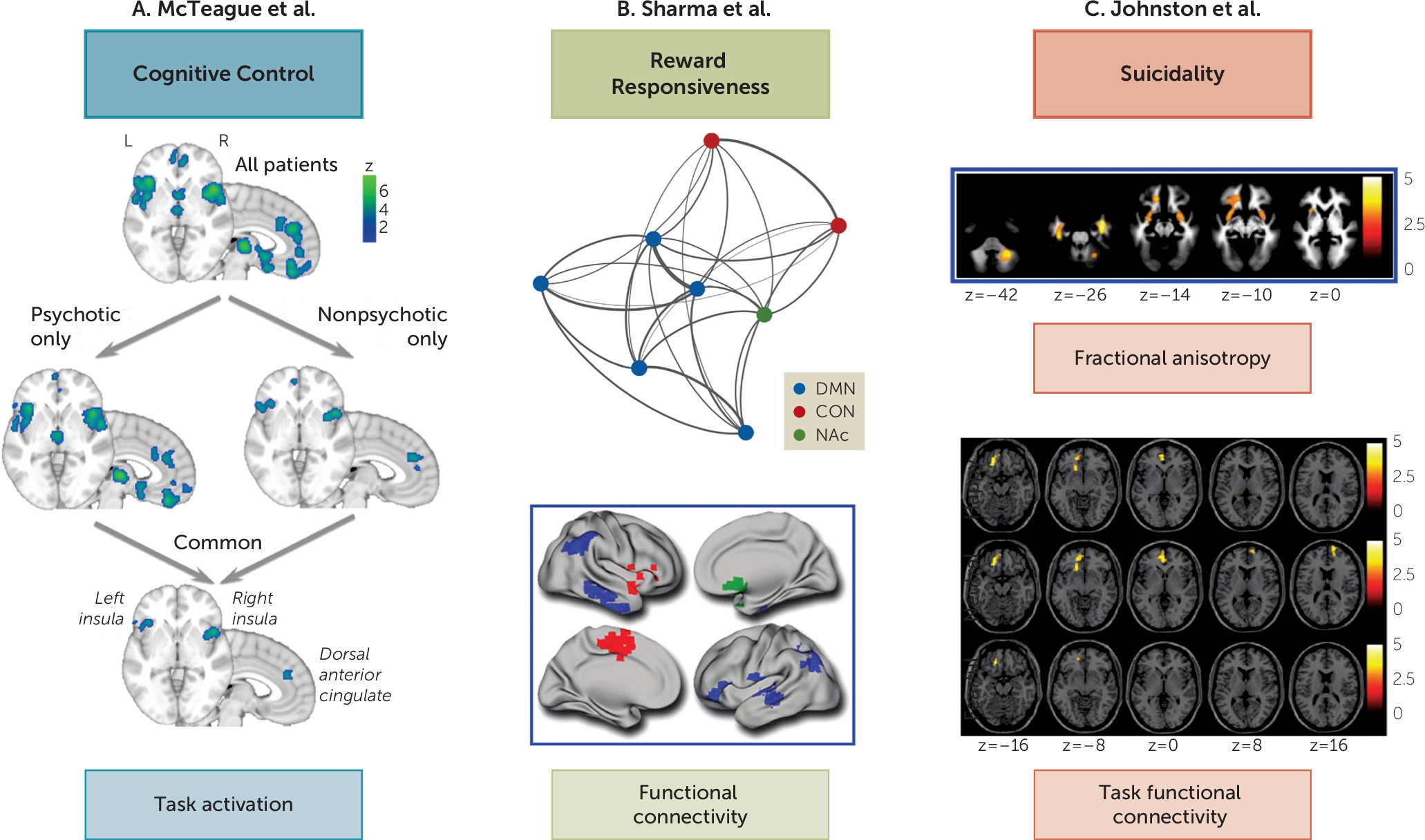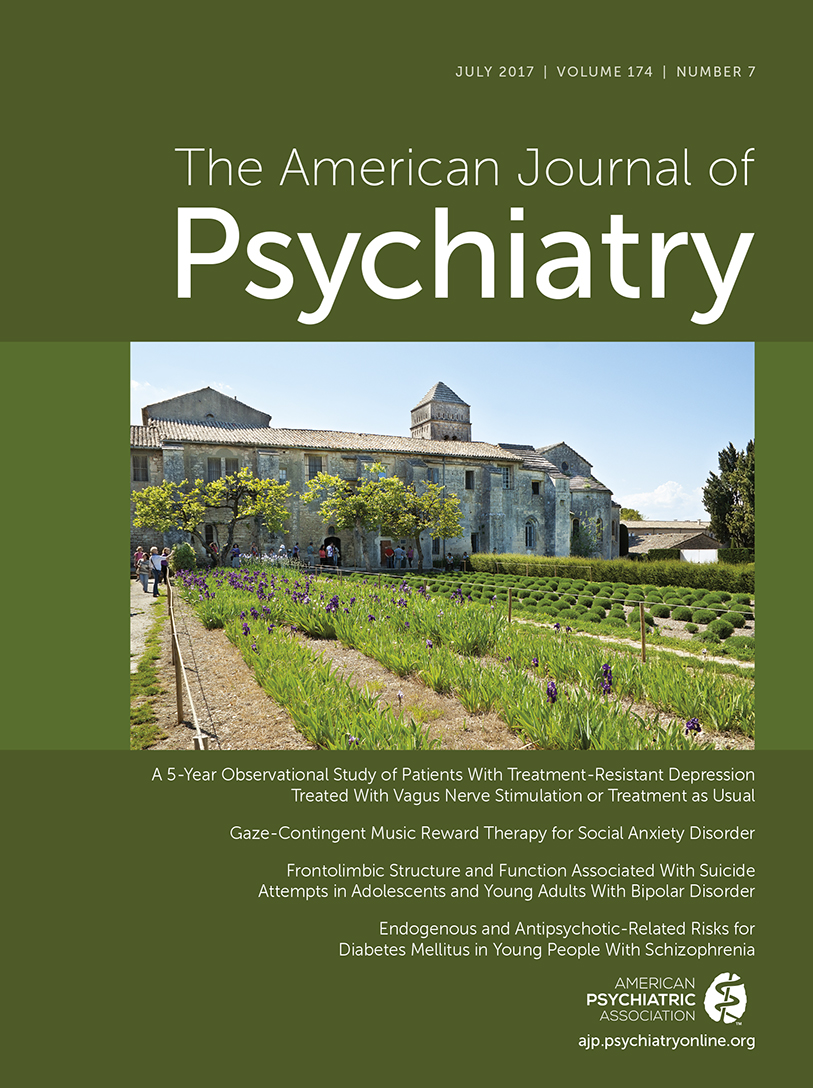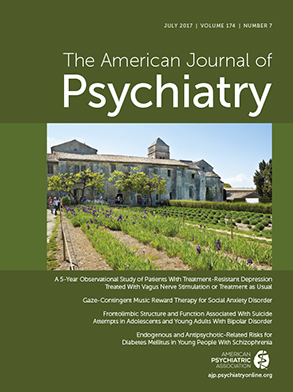Psychopathology researchers have come to recognize that the boundaries between putatively distinct psychiatric disorders do not cleanly map to the more complex configurations of human experience that manifest as mental illness. This complexity stems from the fact that many putatively different psychiatric disorders share what appears at least on the surface to be common symptom features. This recognition has given rise to the Research Domain Criteria initiative, which is focused on identifying core brain-behavior relationships that may cut across traditional diagnostic boundaries. However, there are many open questions regarding such dimensions, including what the “brain” side of the brain-behavior equation entails and whether the same neural mechanisms are associated with seemingly similar behavioral dimensions across diagnostic boundaries. Three articles in this issue of the
Journal report important new data that begin to help address these questions in different domains: McTeague et al., on cognitive control (
1); Sharma et al., on reward processing (
2); and Johnston et al., on suicidality (
3).
McTeague et al. (
1) present an intriguing meta-analysis on alterations in task-related functional activation during cognitive control paradigms across many different forms of psychopathology, including both psychotic and nonpsychotic disorders. The context for this meta-analysis was twofold. The first was the recognition that 1) there is a heritable common component of cognitive function in humans that may reflect cognitive control (
4); 2) many, if not all, forms of psychopathology are associated with impairment in cognitive control, albeit with graded severity (
5); 3) there is a shared heritable dimension of general psychopathology (
6); and 4) this general psychopathology dimension predicts poor cognitive control and function in everyday life (
6). The second contextual element was previous work identifying a set of regions that showed gray matter volume reductions across both psychotic and nonpsychotic disorders (
7). These regions include the left and right anterior insula and dorsal anterior cingulate, a network referred to as both the “multiple cognitive demand” network and the cingulo-opercular network. This group of regions is thought to be critically involved in task control and conflict detection during performance of a wide variety of tasks (
8). McTeague et al. once again found evidence for transdiagnostic alterations in the dorsal anterior cingulate and the right insula (
Figure 1A) that overlapped with the regions found in their gray matter analysis. These results support the hypothesis that cognitive control impairments are a shared feature of many forms of psychopathology, and the results extend the literature by showing that such impairments are associated with shared structural and functional alterations in a circuit known to be important for cognitive control. At the same time, the results also suggest that there may be diagnostically specific neural mechanisms that also contribute to cognitive control impairment. Specifically, McTeague et al. found that individuals with nonpsychotic disorders showed greater evidence of hyperactivation in a midcingulate/presupplementary motor area, while individuals with psychotic disorders showed greater evidence of reduced activation in the left dorsolateral prefrontal cortex, consistent with previous work (
9).
Sharma et al. (
2) tackle a different dimension of behavior that may also be altered in many forms of psychopathology—reward responsiveness. In illnesses such as depression and psychosis, this often manifests as a reduction in reward sensitivity or motivation, a symptom typically referred to as anhedonia, although whether this involves alterations in responsiveness to reward or use of rewards to guide behavior may differ across depression and psychosis (
10). Such alterations have frequently been associated with abnormalities in brain circuits such as the ventral striatum (e.g., the nucleus accumbens), thought to be central to incentive processing, as well as cognitive control systems, thought to be important for goal-directed behavior (
10). Sharma et al. examined the functional connectivity correlates of self-reports on a reward responsivity subscale of the Behavioral Activation Scale in a large sample of individuals with depression, bipolar disorder, and schizophrenia, as well as individuals at clinical or genetic high risk for psychosis, along with healthy control subjects. The investigators employed a novel data-driven analytic technique to identify brain regions whose functional connectivity varied as a function of the level of reward responsiveness. They found that reduced reward responsivity across diagnostic categories was related to 1) decreased functional connectivity between the nucleus accumbens and both the cingulo-opercular network and the default mode network; 2) increased connectivity within the dorsomedial default mode network; and 3) decreased connectivity between the default mode network and the cingulo-opercular network (
Figure 1B). Critically, the relation of reduced reward responsivity to altered connectivity between the cingulo-opercular network and both the ventral striatum and the default mode network may reflect a failure to link information about incentives with the systems involved in goal-directed behavior. Intriguingly, this may be a transdiagnostic feature of disrupted reward processing that could link it with alterations in motivated behavior in everyday life.
Johnston et al. (
3) address yet another important dimension of behavior that cuts across diagnostic boundaries—suicidality. Sadly, clinicians know all too well that suicides can occur in the context of many different forms of mental illness. Although Johnston et al. focus exclusively on suicidal behavior in adolescents and young adults with bipolar disorder, their research nonetheless speaks to questions of transdiagnostic impairments, as the impetus for the project was previous work in other illnesses, such as depression, that had already found a link between suicidal behavior and alterations in frontolimbic circuitry thought to be important for emotion regulation and impulse control (
11). As shown in
Figure 1C, Johnston et al. find results among individuals with bipolar disorder that are at least partially consistent with this previous work, showing structural, diffusion, and functional connectivity alterations in or with prefrontal structures, particularly in ventral regions, among study participants with a history of suicide attempts. Johnston et al. interpret their results and the previous findings in light of the hypothesis that at least some suicidal behaviors may reflect attempts to escape from aversive emotional states (
12), potentially because of impairments in the ability to use effective emotion regulation strategies that may be supported in part by ventral prefrontal regions.
Taken together, these studies illustrate important ways to identify the neural and psychological mechanisms that may give rise to core behavioral dimensions of psychopathology that may cut across putatively different diagnostic entities. Importantly, such data can identify common neural correlates across domains of psychopathology, as in the case of the cingulo-opercular network for cognitive control, connectivity between the nucleus accumbens and the cingulo-opercular network for reward responsiveness, and ventral prefrontal structure and function for suicidal behavior. However, this work also starts to identify potentially important neural mechanisms that may be unique to particular forms of psychopathology, such as greater evidence for altered dorsolateral prefrontal cortex activity during cognitive control in psychotic disorders.
There are several critical next steps for this work. First, it will be important for studies to examine more than one potentially transdiagnostic dimension of psychopathology for us to begin to understand the potential role of interactions between such dimensions (i.e., how does cognitive control interact with reward responsiveness). Second, it will also be important to begin to examine these dimensions of behavior prospectively, to better understand their role in the development and emergence of the relevant behaviors, allowing us to move beyond the description of neural correlates to the identification of neural predictors and mechanistic pathways.


